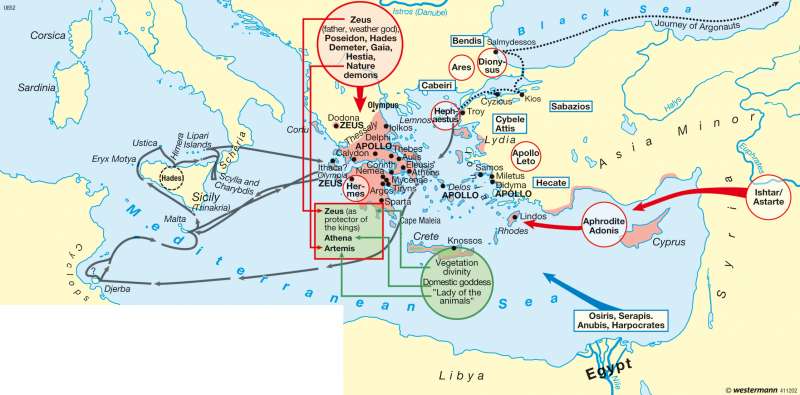Greek mythology
Europe - Classical Antiquity
978-3-14-100790-9 | Page 28 | Ill. 2

Information
The main features and individual elements of ancient Greek mythology are familiar to the majority of Europeans today. Probably everyone has heard of Zeus, the wanderings of Odysseus have become a byword, and the name of Apollo is known at least from NASA's moon landing programme in the 1960s and 1970s.Origins of the Ancient Greek Myths
The most significant sources for the origins of ancient Greek culture are Knossos on Crete, the centre of Minoan culture, and Mycenae, west of Athens, the centre of Mycenaean culture. The palace of Knossos was built around 2000 B.C.; its culture, which was also influenced by Egyptian mythology, collapsed some 600 years later.
Mycenae was the centre of the first Bronze Age high culture on the Greek mainland, which had its heyday from 1400 B.C., i.e. at the end of the period of Minoan culture. However the decline of the Mycenaean culture — which gave many characters and stories to the world of legend — began only some 200 years later.
External Influences
Some of the main elements of Minoan myth were subsequently developed further on the mainland. Thus the fertility deity merged into Zeus and the goddess of animals became Artemis, who was responsible for the hunt among other things. Zeus was seen by the Mycenaeans as the protector of their kings, and later Indo-European immigrants also associated him with the father figure and the weather god. Migrants also brought further gods, such as the sea god Poseidon and the earth goddess Demeter. The numerous natural deities were finally incorpo




